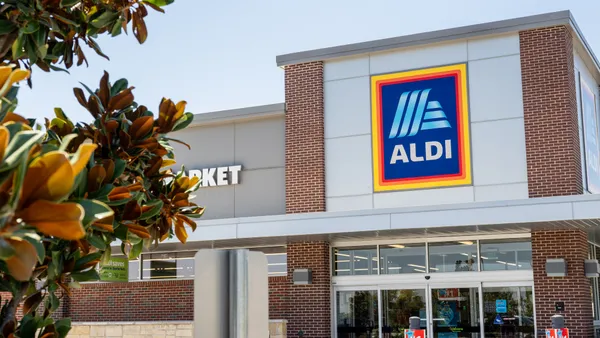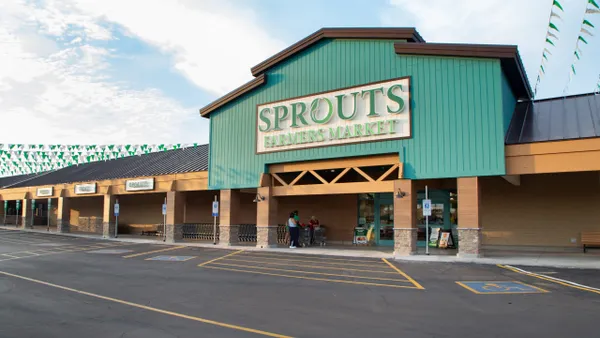Retail Media Networks have become a pervasive—and lucrative—option for retailers of all sizes. While most larger grocers are already reaping the benefits of their robust networks, midsize and smaller players are also realizing the value of pursuing this new platform to develop closer ties with their suppliers, create another revenue stream and offer them an outlet to reach shoppers at the moment of decision.
The opportunity is vast: Brands spent at least $5 billion on retail media, according to Forrester. An Inmar Intelligence Brand Survey found that more than three-quarters of CPGs either agree or strongly agree that all retailers and grocers should have some form of a Retail Media Network solution in place to support brands' advertising and marketing efforts. While there is a perception that a Retail Media Network is most appropriate for large national retailers, the advantages can be enjoyed by retailers of any size, allowing them to monetize the traffic already coming to their e-commerce site. In fact, Forrester predicts Retail Media Networks will someday be as standard to every retailer's revenue profile as loyalty programs.
Here are six questions retailers of all sizes should ask themselves to ensure the best possible experience for their brand partners:
1. Does your solution include all marketing channels and programs?
Traditional Retail Media Networks only include a small slice of marketing tactics, and while it's a fantastic place for brands to capture "warm" customers who are in a buying mood, it nonetheless is limited to that one touchpoint. "For key events, brands are looking to engage the consumer across all touchpoints with programs that integrate personalized offers and incentives throughout," says Steve Ustaris, vice president of marketing for Inmar's retail cloud data and media solutions.
2. Do you provide unified reporting that simplifies their lives?
An Inmar survey found the feature retailers most wanted in their Retail Media Network was sales reporting and attribution, followed closely by analytics and insights and data targeting. As retailers bring on more providers to expand their networks, providing a seamless reporting experience can be challenging, says Ustaris. "Today brands often receive separate reporting from different vendors within the same retail media network with no deduplication, which prevents them from understanding what the true ROI is of - cross-channel campaigns."
3. Do you have adequate access to customer data?
Leveraging customer data can help brands plan smarter campaigns and target their optimal shoppers with greater precision. Customer data should be accessible within an easy-to-use framework to provide deeper insights into the CPG's category and products in order to guide campaign planning and tactics and enable more precise cross-channel targeting. "To drive better outcomes, retail media networks should allow brands to utilize customer data at the planning stage and deploy the same data at the execution stage," says Ustaris.
4. Do you provide ROI measurement in real time?
There's a reason Google, Amazon and Facebook are the top advertising players, Ustaris says, and a key driver is their ability to deliver results in real time so brands have a constant picture of their ROI. "Today's world moves fast, and there's no time for you to tell your advertisers they need to wait for the end of the campaign for you to develop a PowerPoint. Brands need this information immediately, across all channels, and retailers and grocers need to deliver."
5. Do you offer a seamless buying experience?
It's common for some retailers to select multiple providers to support their Retail Media Network channels. However, they have to ensure that even if the capabilities are divided across providers, the experience appears unified and organized to the buyer—for example this can be achieved through a singular or integrated sales team, a singular billing system, centralized marketing and integrated customer services.
6. Do you offer innovative Retail Media Network programs that align with your shared seasonal calendar?
Retailers have a shared commercial planning calendar with their brands, and the majority of marketing investment from brands goes towards supporting these events. The Retail Media Network should be designed with cross-channel programs in mind to support this strategy.
Thinking Beyond the Retail Media Network to a Retail Marketing Platform
These questions illuminate the most common pain points grocers share, based on feedback from their brand partners. If the goal is to deliver a better return on investment to brands, they need to provide a more seamless approach, and one important evolving option is the Retail Marketing Platform. Through Inmar's ShopperSync™, grocers can achieve greater loyalty—and revenue—with a platform that unifies targeting, marketing and attribution across channels.
"Working with our retail partners has allowed us to take what they are already doing extremely well with their Retailer Media Networks and elevate it with the Retail Marketing Platform so they can provide even more value to brand partners and drive more loyalty with consumers," Ustaris says.
About Inmar Intelligence Commerce Accelerated.™
Inmar Intelligence is a leading data and tech-enabled services company. $120 billion dollars of commerce runs through our market-driven platforms which are propelling digital transformation through unified data and workflows to help leading Fortune 5000 companies, emerging brands and health systems drive innovation.
Throughout our 40-year history, we have served retailers, manufacturers, pharmacies, health systems, government and employers as their trusted intermediary in helping them redefine success. For more information about Inmar, please follow us on Twitter, LinkedIn or Facebook, or call (866) 440-6917.










